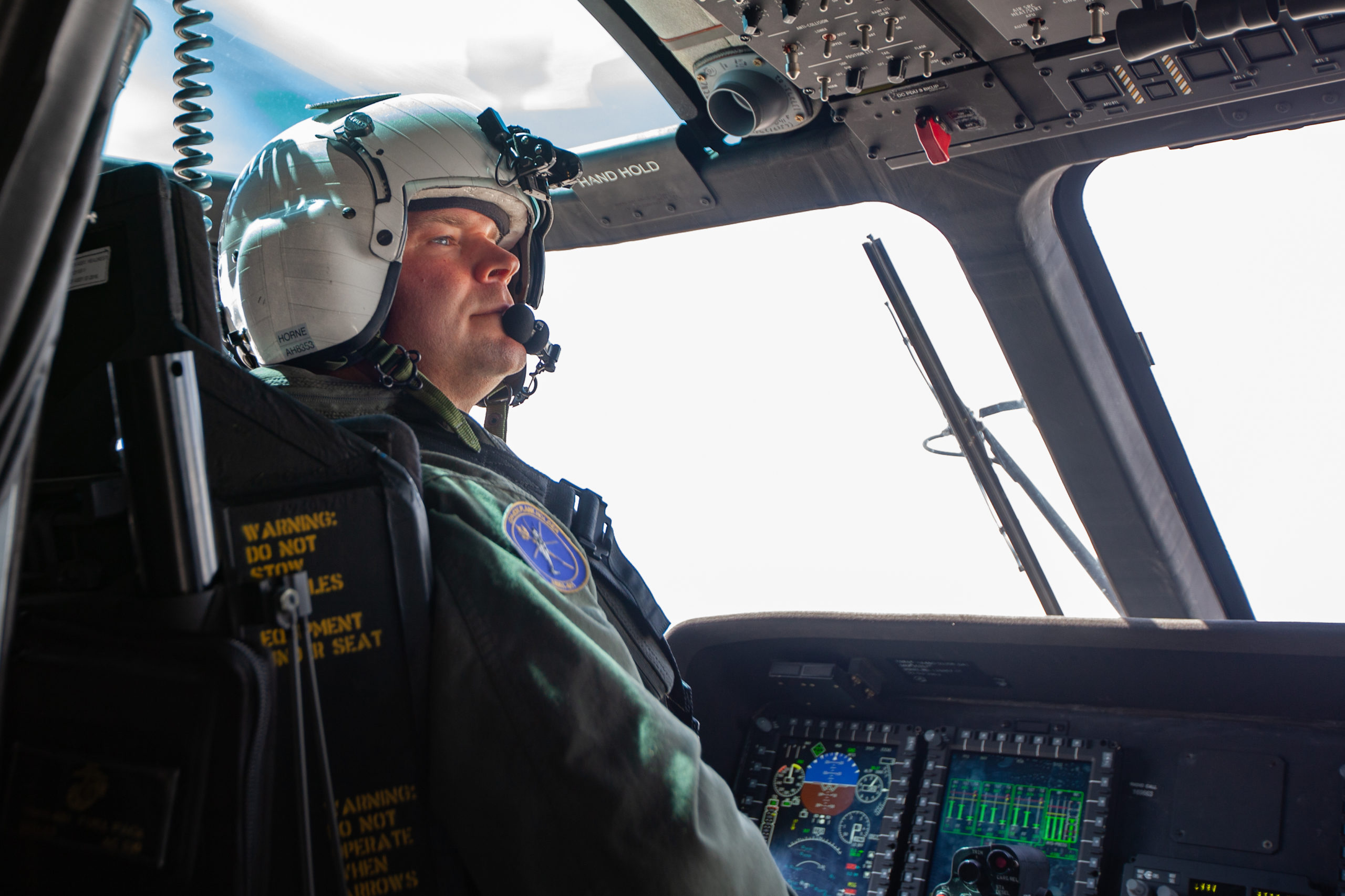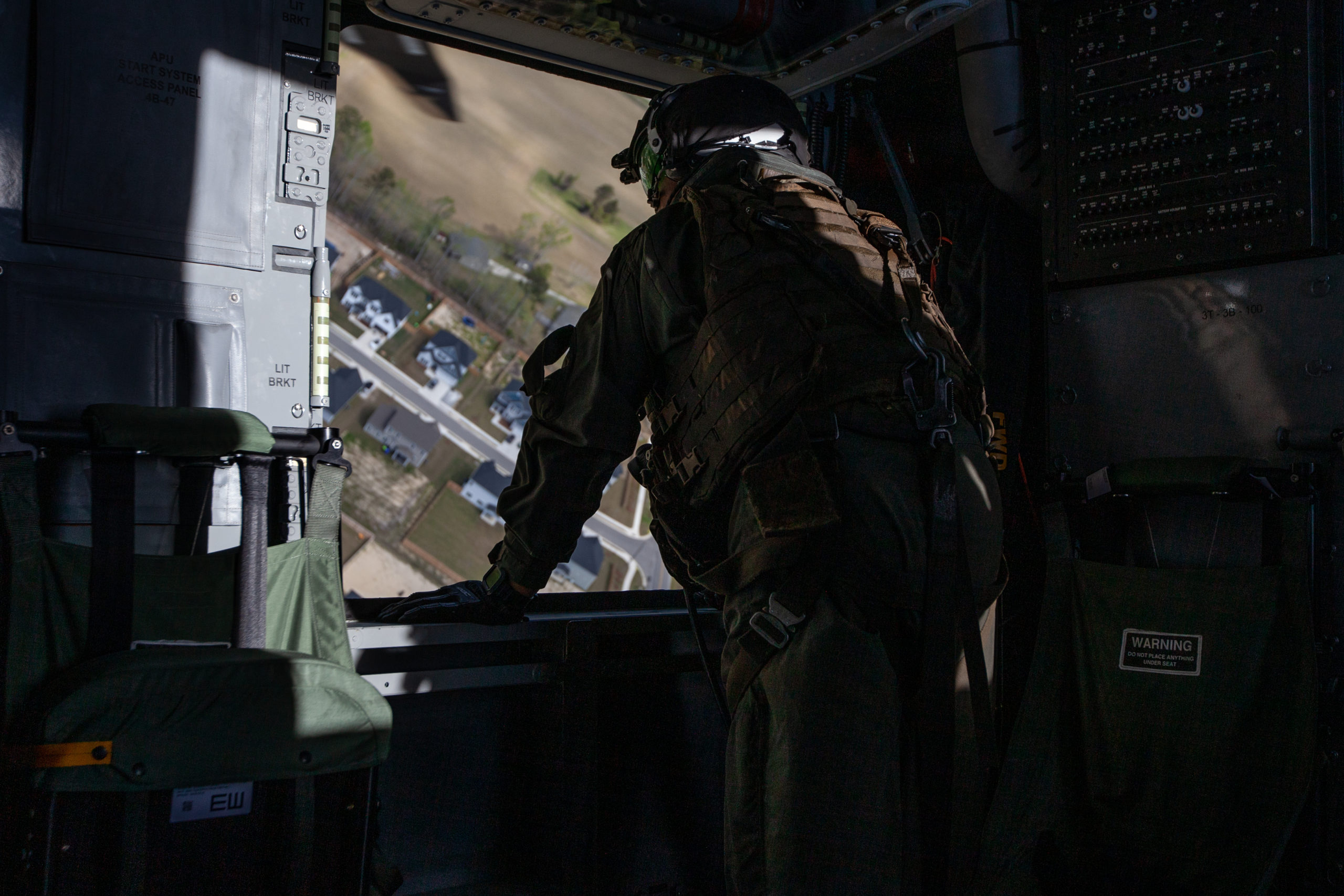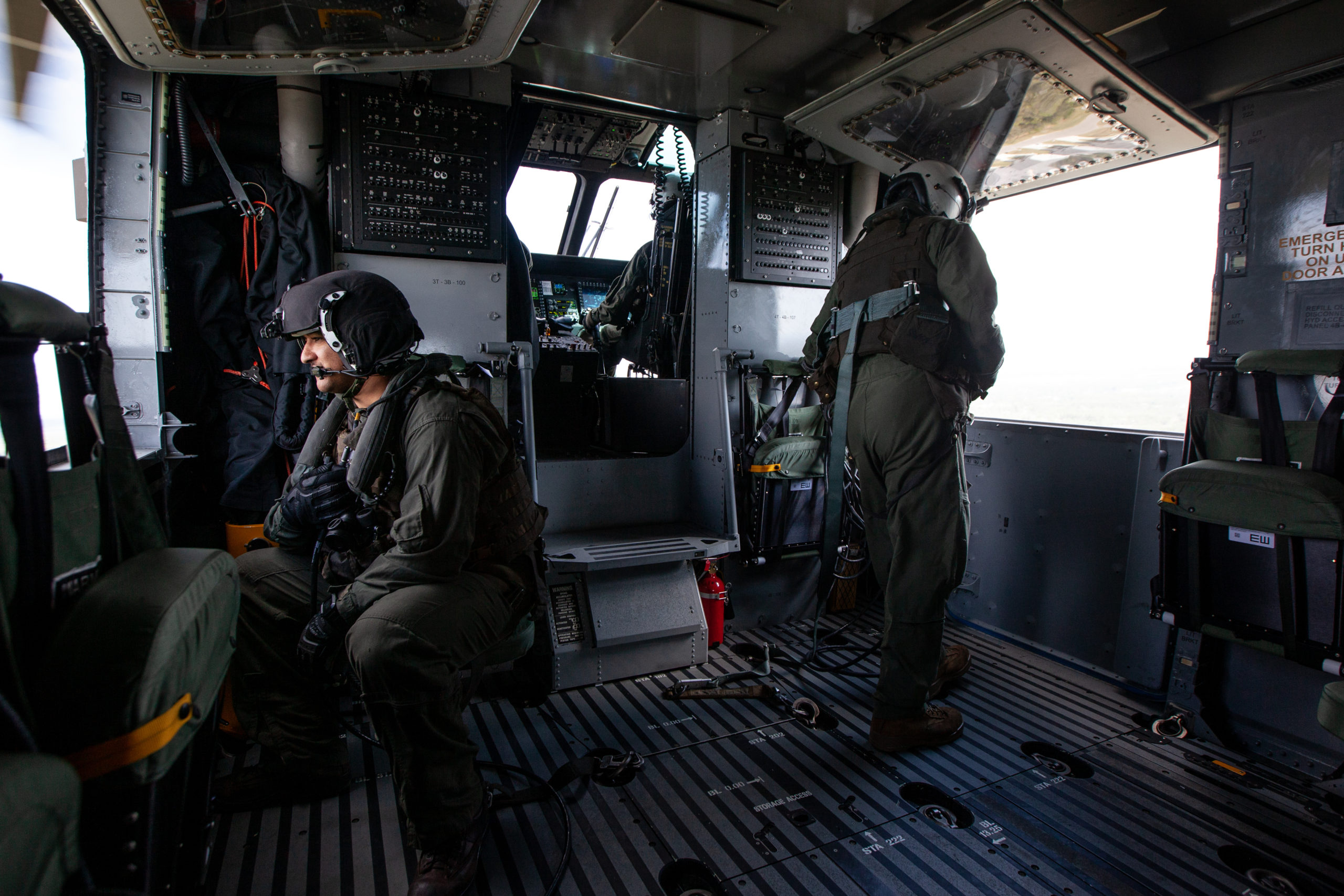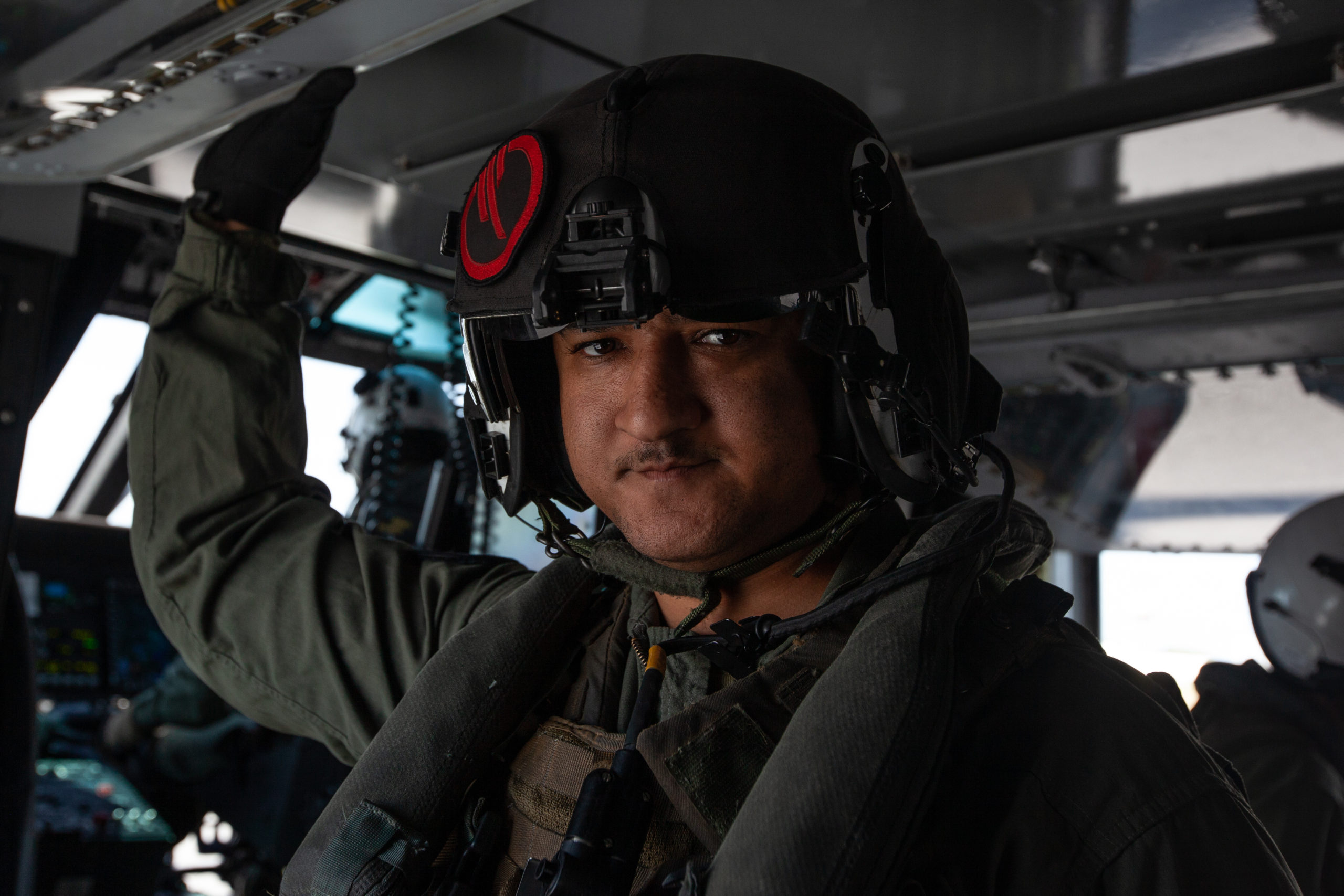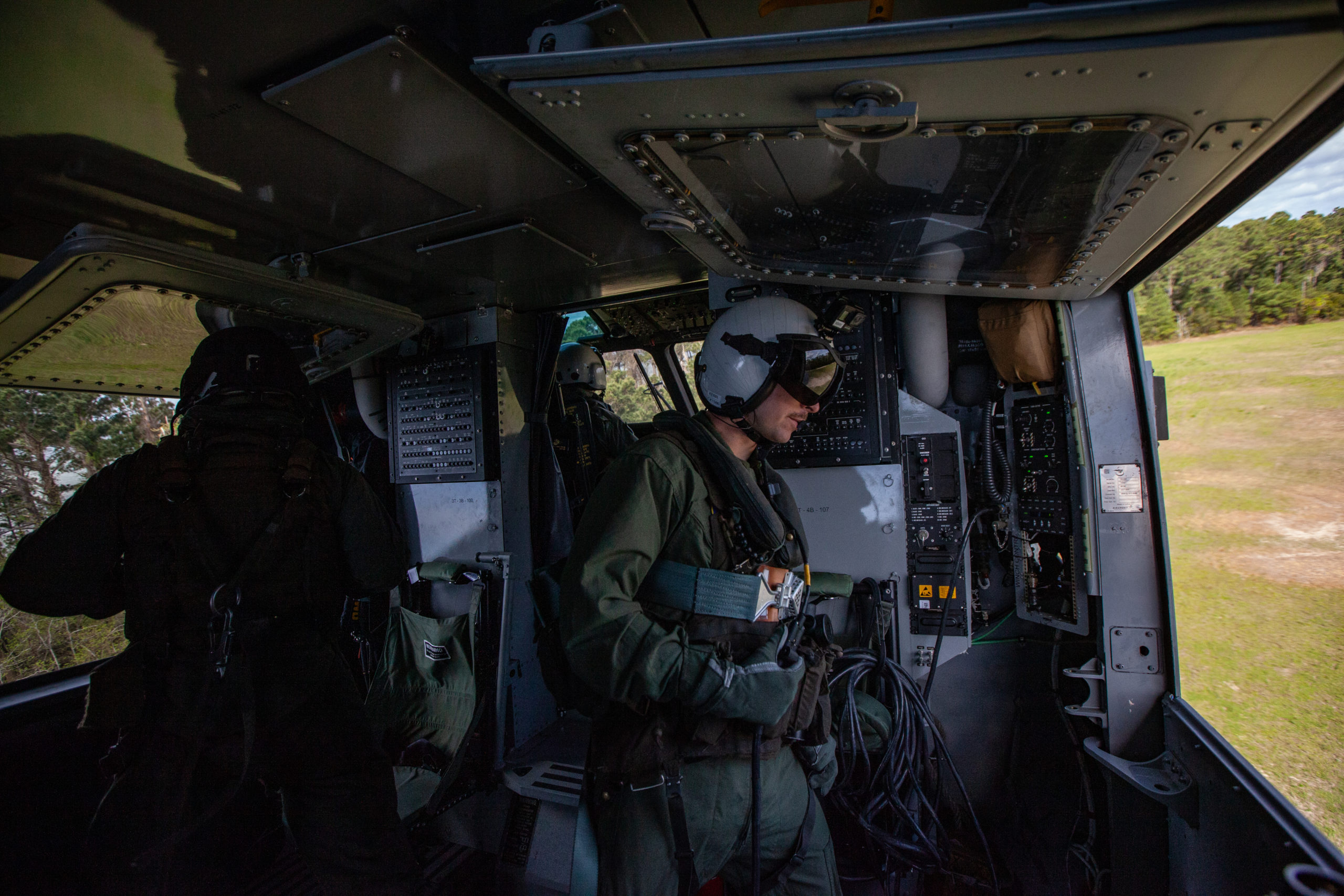By Robbin Laird
The USMC stood up its first operational unit for the CH-53K on January 15, 2022.
That unit is Marine Heavy Helicopter Squadron (HMH) 461 at Marine Corps Air Station (MCAS) New River, North Carolina and has been designated as the first fleet CH-53K unit.
It will be declared IOC when it has its first four helicopters and the members of the unit, including the maintainers, are declared properly trained and qualified on the aircraft, with training, spare parts and maintenance capacity able to support operational deployment.
And on April 13, 2022, HMH-461 flew its first operational flight with the CH-53K at Marine Corps Air Station, New River, North Carolina. The flight signified the beginning of HMH-461’s modernization from the CH-53E Super Stallion to the CH-53K King Stallion. HMH-461 is a subordinate unit of 2nd Marine Aircraft Wing, the aviation combat element of II Marine Expeditionary Force.
The USMC has been undergoing significant transformation since 2007. The first phase of the transformation process was driven by the acquisition and combat use of the Osprey. The second phase of the transformation process is being driven by the acquisition and operational and combat use of the F-35B across the USMC and the joint and coalition force. The latest phase of transformation is focused on the capabilities of the USMC to drive change in the joint and coalition force with regard to mobile and expeditionary basing. The coming of the CH-53K can be a key enabler of force mobility across the joint and mobile force.
As I have written in my recently published book on USMC transformation with regard to how the K is part of a broader transformation process.
“The Marines can leverage their expeditionary history and capabilities to operate more effectively with the distributed maritime operations or DMO fleet. One way is to enhance how they can operate off of the amphibious fleet to play an expanded role in sea control and sea denial at sea.
“Rather than looking at the amphibious fleet as providing greyhound buses to jump off to fight at land, the focus is upon how the amphibious fleet today and redesigned into the future can be part of the wider DMO sea control and sea denial mission sets.
“The Marines are enhancing their capabilities to operate as crisis management integrated forces, such as marine expeditionary units or marine expeditionary brigades to operate from mobile bases with the addition of the CH-53K. Force insertion capabilities have clearly expanded as they are building out the Osprey–F- 35B–CH-53K triad. The focus here is upon having an integrated modular force capability survivable and lethal enough to fight as an integrated combat force while operating from distributed bases.”
Later in the book I returned to the question of how the CH-53K is a key driver for the transformation process.
“Without an effective heavy lift asset, the ability to operate from the sea base or to establish or support distributed Forward Operating Points or FARPs would be undercut and with it, the efforts to enhance mobile and expeditionary basing. The CH-53K will provide a key element of being able to carry equipment and/or personnel to the objective area. And with its ability to carry three times the external load of the CH-53E and to be able to deliver the external load to different operating bases, the aircraft will contribute significantly to distributed operations.
“But the digital nature of the aircraft, and the configuration of the cockpit, are key parts of its ability to contribute as well. The aircraft is a fly-by-wire system with digital interoperability built in. And with multiple screens in the cockpit able to manage data in a variety of ways, the aircraft can operate as a lead element, a supporting element or a distributed integrated support node to the insertion force.
“A key change associated with the new digital aircraft, whether they are P-8s or Cyclone ASW helicopters, is a different kind of workflow. The screens in the aircraft can be configured to the task and data moved throughout the aircraft to facilitate a mission task-oriented work flow.
“In the case of the CH-53K, the aircraft could operate as a Local Area Network for an insertion task force, or simply as a node pushing data back into the back where the Marines are operating MAGTABs. Marines carrying MAGTABs onboard the CH-53K will be able to engage with the task force to understand their role at the point of insertion. The K as a digital aircraft, combined with the digital transformation of the Marines, creates a very different ground force insertion capability.”
Credit Video:
MARINE CORPS AIR STATION NEW RIVER, NC, UNITED STATES
04.13.2022
Video by Lance Cpl. Christian Cortez
2nd Marine Aircraft Wing


